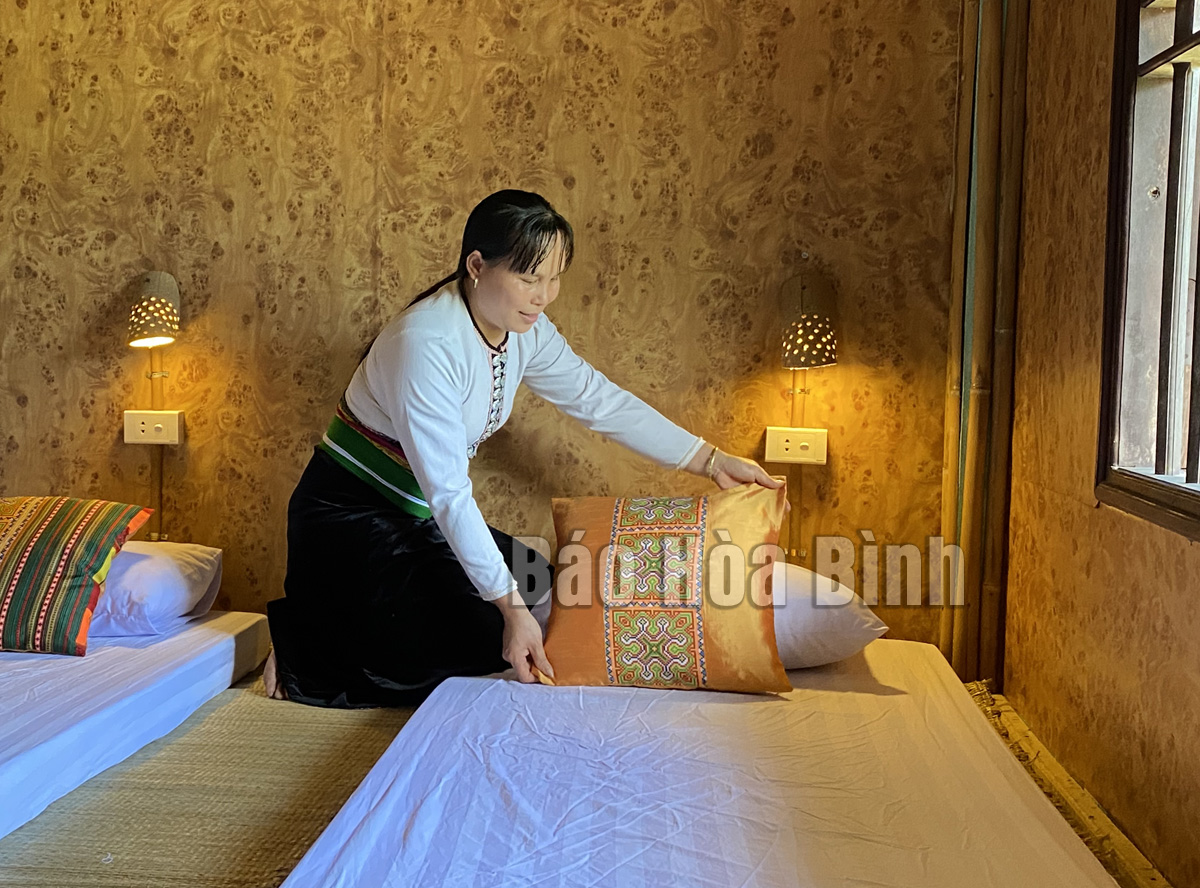
(HBO) - The pristine and magnificent beauty of the landscape, adorned by the simplicity and charm of the villages of Muong, Dao, and Tay ethnic groups, never fails to captivate tourists whenever they visit the Hoa Binh Lake Tourism Area.

Tourists experience kayaking on Hoa Binh Lake.
Hoa Binh Lake is the largest man-made in Southeast Asia, with a length of about 70 kilometres, spanning across 17 communes in five districts and the city of Hoa Binh province. It is home to hundreds of islets, with limestone mountain ranges, and a system of caves with countless stalactites, creating a surreal and colourful landscape. The lake also boasts small bays and is surrounded by forests teeming with diverse fauna and flora. In addition to the breathtaking natural beauty, there are traditional ethnic minority villages that have preserved their cultural values. All of these factors provide perfect conditions for the development of tourism in the area.
Over the past years, to promote tourism development in the area, the province has invested in essential infrastructure. Locals have also paid attention to preserving and promoting their traditional cultural values. To embark on a trip to the area, tourists can start at different locations. The closest to the centre of Hoa Binh city is Bich Ha Port, located just behind the Hoa Binh Hydroelectric Plant, making it convenient to welcome tourists. Additionally, there are docks like Bai Sang (Mai Chau) and Hien Luong (Da Bac), from which tourists can explore the lake.
Tourists can drive 25 kilometers northwest of Hoa Binh city to explore the lake area, starting from Thung Nai Port in the commune of the same name in Cao Phong district. Here, they can stay in Coi Xay Gio (Windmill) Guesthouse, Dao Dua (Coconut Island), and Dao Ngoc Xanh (Emerald Island).
According to local authorities, there are more than 100 accommodation establishments and approximately 300 passenger transportation vehicles at the Hoa Binh Lake Tourist Area. Furthermore, there are two stunning resorts - Mai Chau Hideaway and Ba Khan Village Resort.
Last year, the tourist site welcomed 400,000 visitors, and the number is expected to reach 500,000 annually.
A diverse chain of eco-tourism and resort destinations concentrated in Hoa Binh city and the districts of Tan Lac, Da Bac, and Luong Son… Along with the launch of several key high-quality resort tourism projects, these developments have reshaped the landscape and enhanced the appeal of Hoa Binh as a travel destination.
Boasting diverse terrain, a mild climate, and rich natural resources, Cao Phong district is increasingly asserting its place on Vietnam’s tourism map, attracting both domestic and foreign visitors. The district is renowned for its stunning landscapes, majestic mountains, a crystal-clear hydropower lake, and the unique cultural identity of local ethnic groups.
With its pristine landscapes, unique cultural heritage of Muong ethnic minority, and an expanding range of visitor experiences, Tan Lac district of Hoa Binh has fast become a captivating destination for both domestic and international tourists.
Until now, Sung village in Cao Son commune, Da Bac district remains the only Dao ethnic community in Hoa Binh province to develop a community-based tourism model. Beyond its untouched natural landscapes, cultural identity serves as the cornerstone attraction for visitors.
Alongside the diverse cultural identities of the Kinh, Muong, Tay, Thai, Dao, and Mong ethnic people, Hoa Binh province is also renowned as the "capital" of the northwestern Vietnamese cuisine, offering unique and distinctive dishes. At festivals, during Lunar New Year (Tet), or on significant family or community occasions, special dishes are prepared, leaving a lasting impression on visitors.
A Phong Linh (Yellow Tabebuia) flower garden in Thang village, Thach Yen commune, Cao Phong district is currently in full bloom, drawing a large number of visitors.



